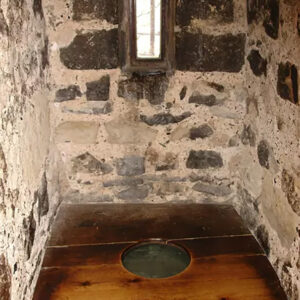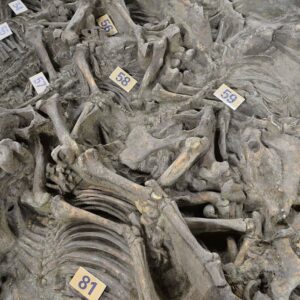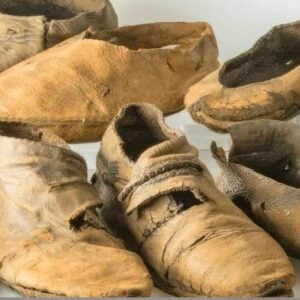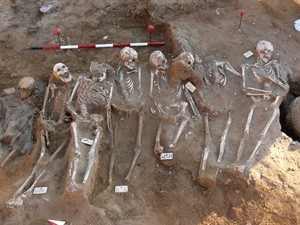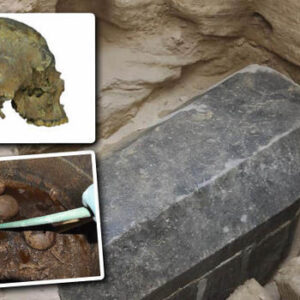Palestinian and French archaeologists have unearthed four Roman-era tombs in the heart of Gaza City.
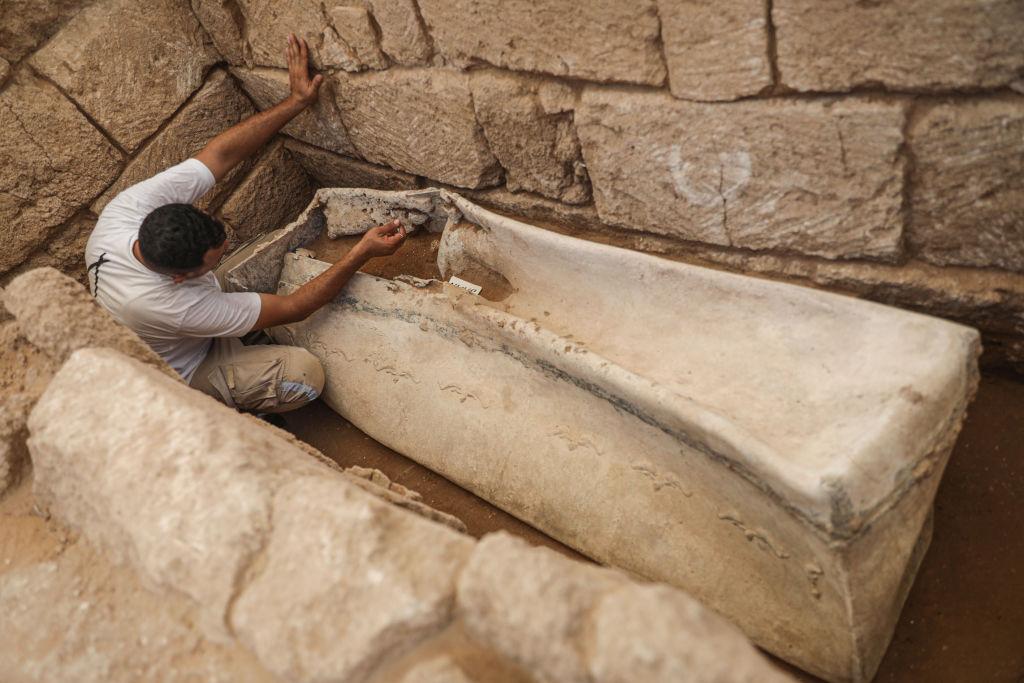
A lead sarcophagus unearthed during archaeological excavations at the site, the second such discovery this year. Credit: Mustafa Hassona/Anadolu Agency via Getty Images
The ongoing excavation efforts, led by a dedicated team of experts, have revealed a total of 134 graves within the vast archaeological site, which spans an impressive 43,000 square feet. The cemetery, believed to be around 2,000 years old, is situated in Gaza City, a location of immense historical importance due to its strategic position at the crossroads of the Asian and African continents.
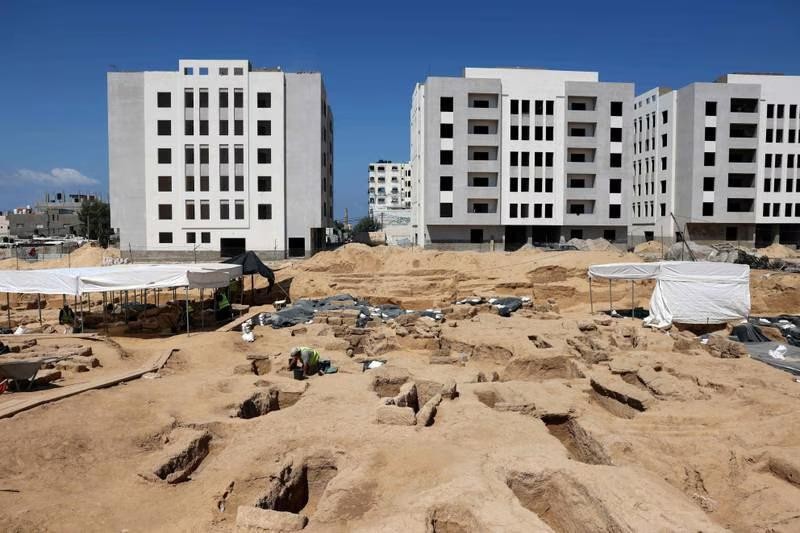
Jamal Abu Reida, the Director-General of Antiquities at the Ministry of Tourism and Antiquities, emphasized the significance of these findings, stating that “the ongoing work is part of the long journey to uncover historical and archaeological discoveries, which have been found in various areas of the Gaza Strip in recent years.” This archaeological endeavor has the dual goal of restoring the site and making it accessible to tourists and researchers from around the world.
Two of the most remarkable discoveries within the tombs are two lead coffins, each bearing unique engravings. One coffin is intricately adorned with grape harvest motifs, while the other features captivating depictions of dolphins gliding through water.

The ancient cemetery was unearthed during the construction of a housing project. Credit: AP
Notably, many of the graves within the cemetery display pyramid designs, showcasing the architectural ingenuity of the ancient inhabitants. Fragments of jewelry and pottery have also been uncovered, providing further insights into the lives and customs of those who lived in the region during the Roman era.
Gaza’s archaeological significance is unquestionable, given its status as a historical crossroads between two continents. However, the progress of excavation and preservation efforts has often been hindered by the lack of sustained funding. Despite this obstacle, the restoration of this ancient Roman cemetery has been made possible through support from the British Council’s Fund for the Protection of Culture.
The cemetery remained hidden beneath the soil of Gaza for centuries until its accidental discovery in December of last year when Egyptian construction workers were bulldozing the area as part of a reconstruction project in the northwest of the Gaza Strip. This revelation marked a significant milestone in the ongoing efforts to uncover and safeguard Gaza’s rich cultural heritage.
Archaeologist Fadel al-Otol, who plays a pivotal role in leading the excavation and restoration work, highlighted the importance of seeking additional discoveries in Gaza. He also expressed deep concern over the lack of financial resources available for the maintenance of antiquities, owing to the challenging living conditions in the enclave, where more than two million people reside.
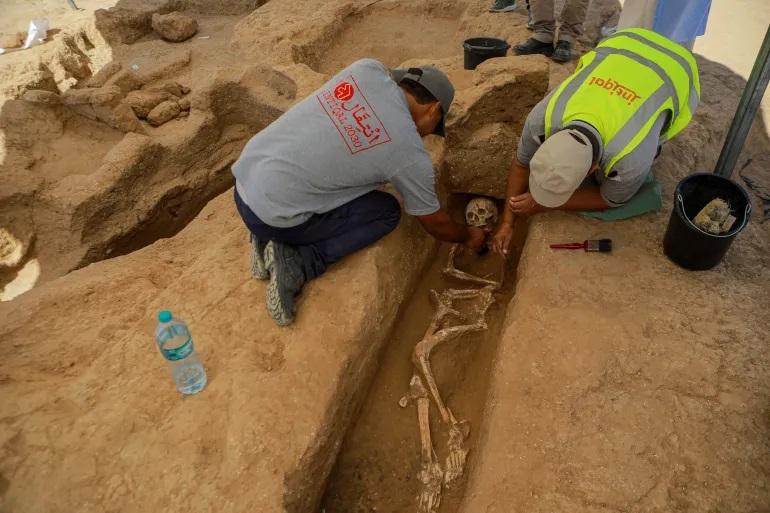
The remains of a human in one of the four graves discovered in the Roman cemetery. Credit: Abdelhakim Abu Riash/Al Jazeera
Al-Otol’s words also challenged a prevailing narrative, stating that “these archaeological findings show the historical roots and Palestinian heritage, which extend over thousands of years, debunking all narratives propagated by the Israeli occupation that portray Palestine as a land without a people and a people without a land.”
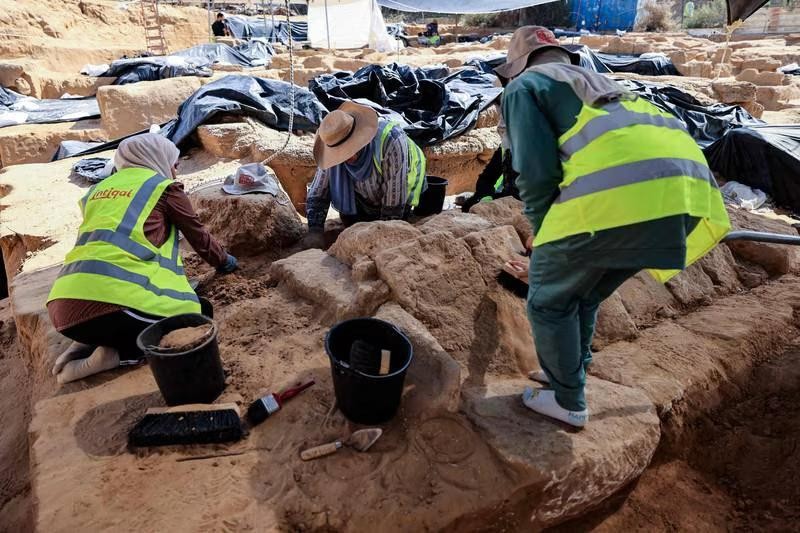
This remarkable discovery follows another historic find made three months ago when mosaic floors dating back to the Byzantine era, approximately 1,800 years old, were unearthed in the central part of the Gaza Strip.
